I am forever fascinated by sea life and all its magic. From above, the ocean may look like a blue monochromatic world but beneath the waves, it’s a place bursting with every color of the rainbow. If you’re a water lover like me, and you’ve dunked your head below the waterline, you’ll instantly see what I mean.
While I’ve always been passionate about the ocean before I sprouted gills and became a scuba diver, I fuelled my fire through swimming and snorkeling. I used to spend hours on the water and in the water, beachcombing and scouring tidal pools just to investigate some of the interesting creatures that lived in it.
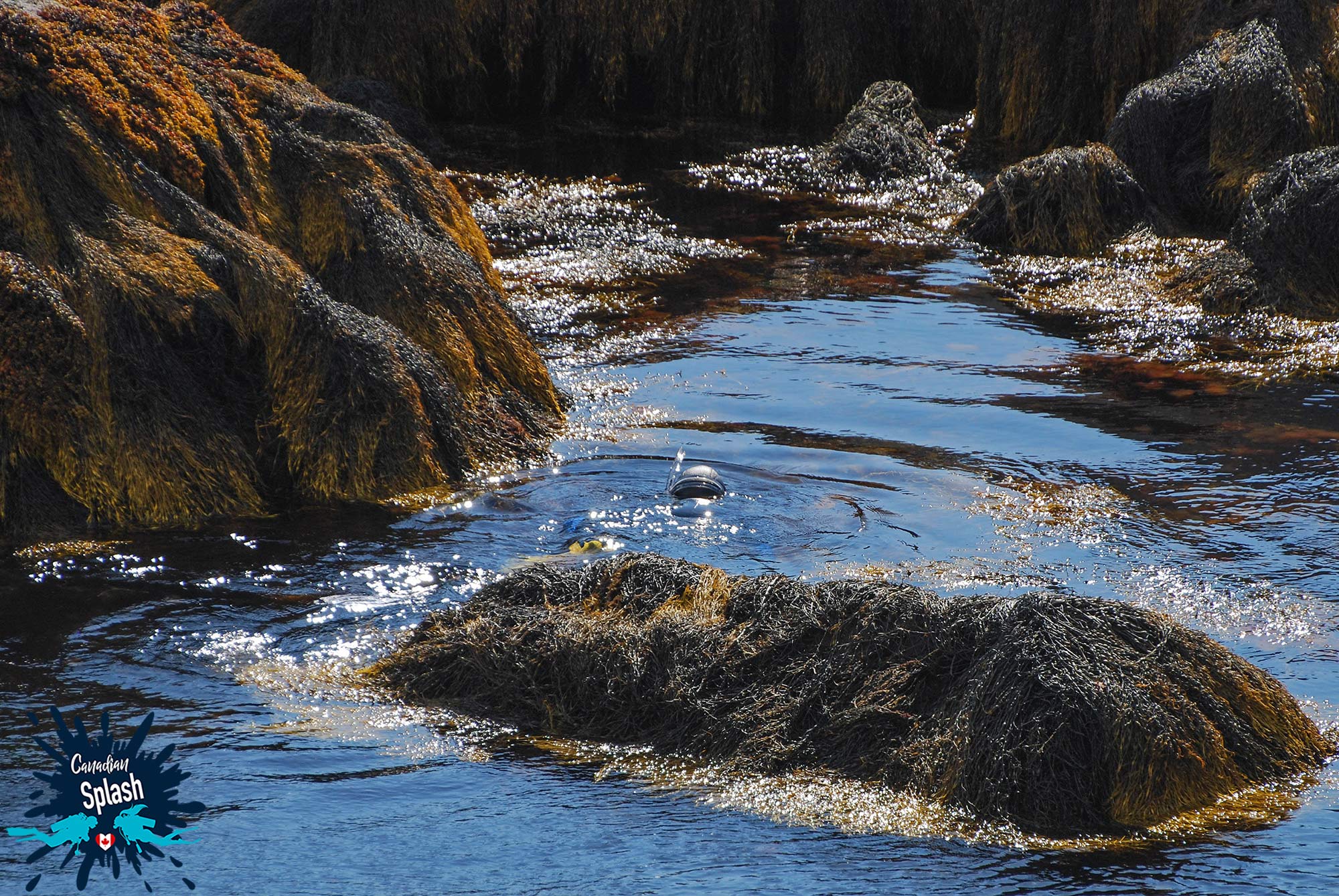
Tide pools are a part of the intertidal zone, which is essentially a section of the ocean where water meets land. These shallow pools of water are exposed at low tide and submerged by the ocean at high tide. The intertidal zone is considered the smallest area of the world’s oceans, but also the best-known thanks to its ease of accessibility.
Compared to other oceanic zones, tide pools have the greatest variation in environmental factors. Harsh temperatures, evaporation, and powerful waves are just some of the natural forces affecting this zone. Because of this somewhat extreme environment, creatures living in the intertidal zone have special adaptations to withstand; desiccation, wave action, changes in salinity, sudden temperature changes and other challenges thrown their way.

In Canada, we are blessed to have access to shorelines touching three different oceans; the Atlantic, Pacific, and Arctic. Not only that, but we are also situated along the Great Lakes, the largest freshwater lakes in the world.
As Canadians, water is all around us, and so are the creatures that call this aquatic realm home. However, as much as we are surrounded by a watery world, unfortunately not everyone gets to glimpse what is beneath the tideline. That being said, even if your not a fan of snorkeling or scuba diving, the underwater world can still be right at your fingertips through tide pools.

Thanks to their iconic name and beautiful appearance, sea stars are one of the most beloved creatures of the sea. As a member of the echinoderm phylum, some of the sea star’s closest relatives include sea urchins, sea cucumbers, sea lilies and sand dollars.
In spite of lacking a brain, sea stars have developed chemosensory and regenerative capabilities allowing them to sense their environment and heal themselves. Accordingly, starfish are assumed to pick up rather limited information from the surroundings and guide themselves by olfaction. They can also regenerate lost limbs and in some cases, entire segments of their bodies.

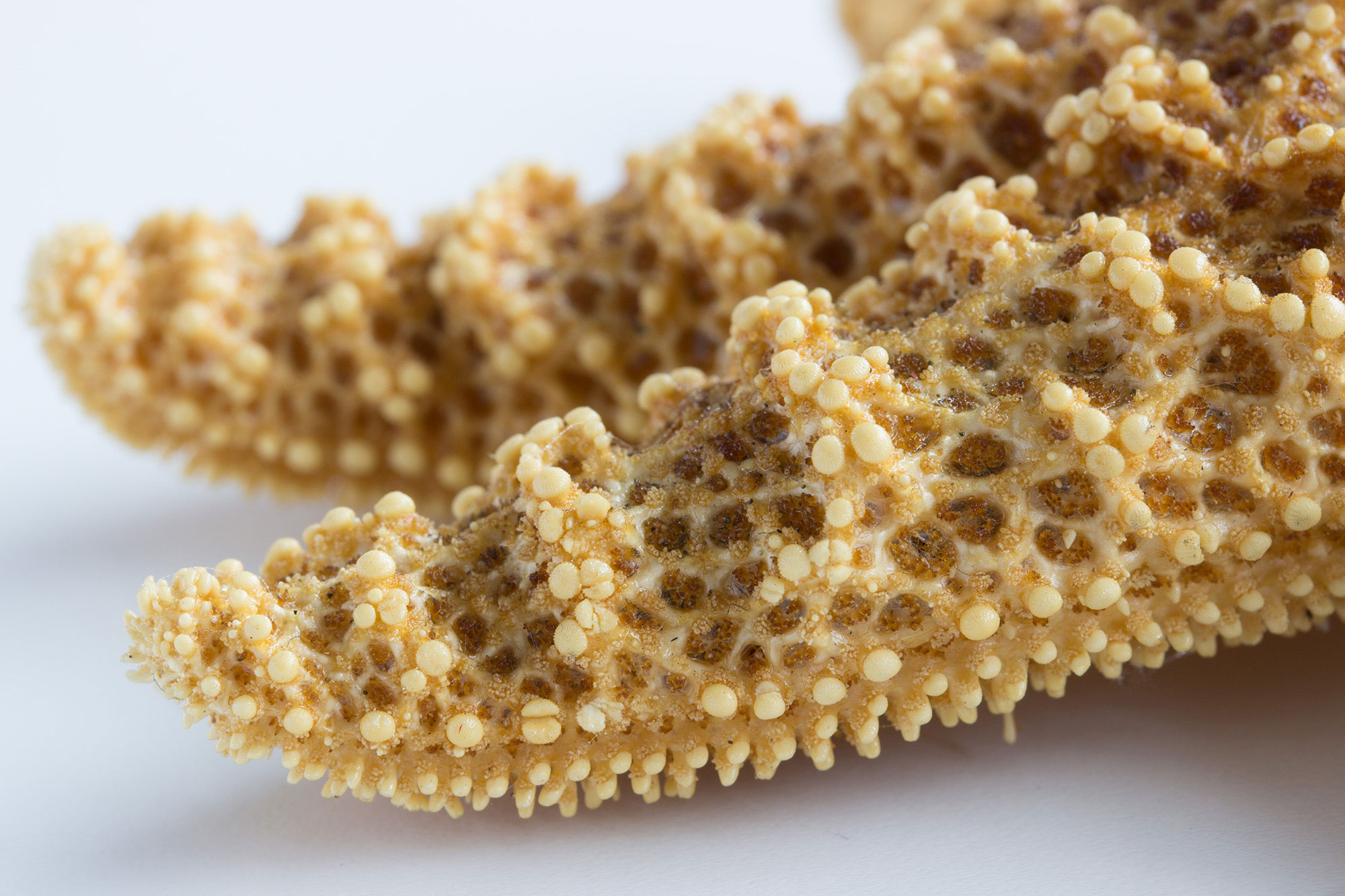
Species in the Spotlight: While sea stars may look like dainty little decorations on the ocean floor, there is so much more to this species than what first meets the eye. Read more about sea stars as we spotlight this incredible oceanic creature.
Sea stars are found throughout all the world’s oceans. They have learned to live in all kinds of different oceanic habitats from the warm intertidal zone of the tropics to the harsh and frigid poles. The waters off the Canadian east coast are home to many different species of sea stars. They can be found on rocky and sandy substrates where they feed on mollusks and other benthic organisms. Some common species include; common sea star (Asterias vulgaris), blood star (Henricia sanguinolenta), common sun star (Crossaster papposus) and purple sun star (Solaster endeca). Many of these species come in startling arrays of colours such as purple, pink, oranges and yellows.
Sea stars are often called keystone species because of their ability to influence the structure of the entire intertidal community. In the north Atlantic, sea stars prey primarily on mollusks – specifically mussels. If sea stars were removed from the ecosystem, the mollusk population would greatly increase, affecting the intertidal Atlantic and all its encompassing organisms.
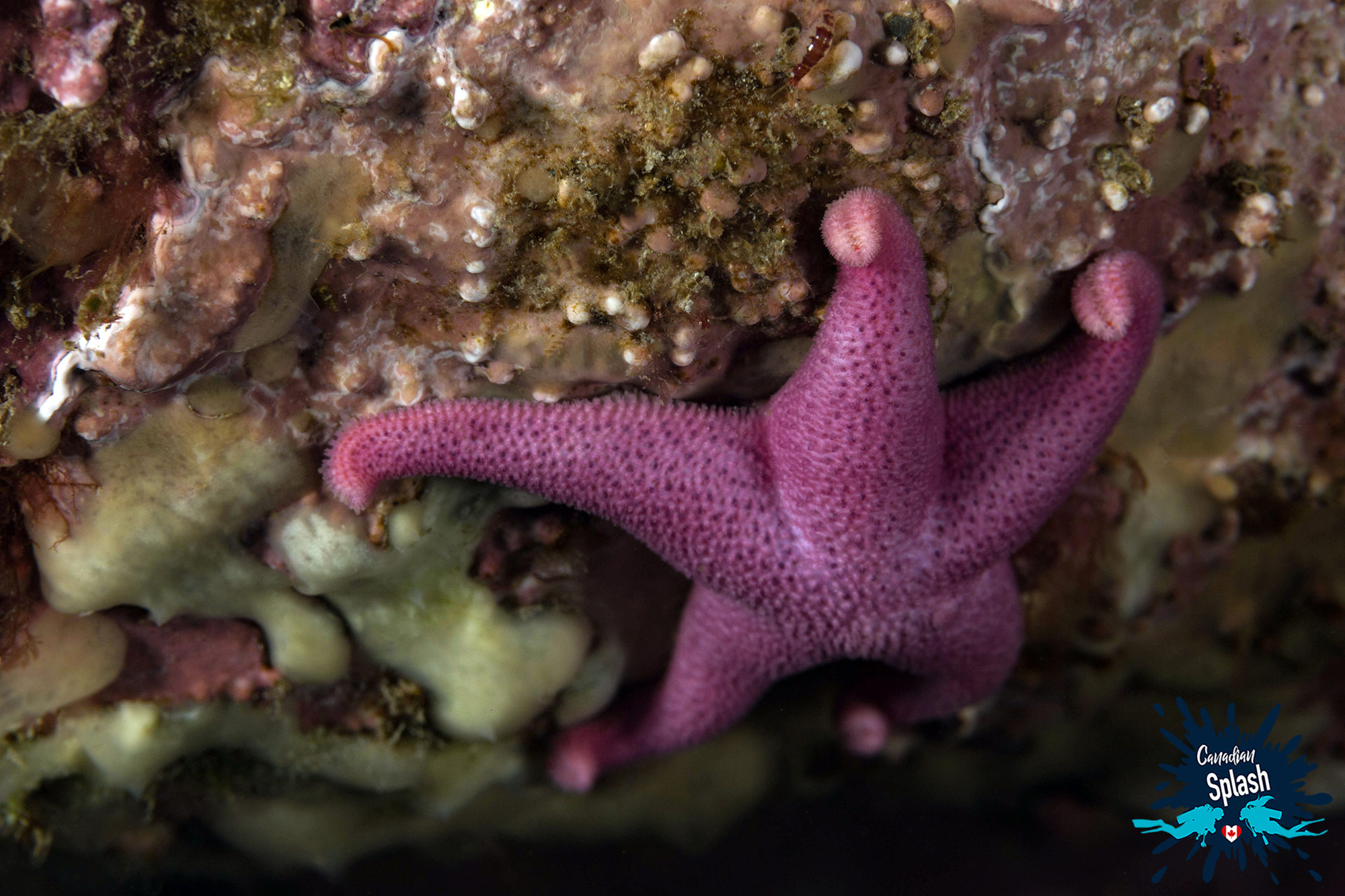
Sometimes called the hedgehogs of the sea, sea urchins are an unconventional animal possessing a hard calcareous shell, called a test, paired with prickly movable spines used for passive defense. Between sea urchin spines, are hundreds of tube feet used for attaching to substrate, capturing food and locomotion.
Like their relatives the sea star, sea urchins also have the ability to regenerate. If a spine is damaged or lost, they can rebuild it. Their regenerative capabilities however only extend so far. If the damage is too extensive (i.e. to their shell), the urchin cannot heal.
Sea urchins have a circumpolar distribution. They can be found in warm tropical waters as well as in the cold northern seas. In the Canadian north Atlantic, two common species include green and purple sea urchins (Strongylocentrotus droebachiensis and Arbacia punctulata). While these species of urchin are occasionally found in deep water, they tend to prefer the rocky shallows close to shore.
In order to protect themselves from the currents and powerful waves of the intertidal zones, sea urchins will commonly lodge themselves between rocks or in the mud. When scouring a tide pool for these spikey critters be sure to check sheltered cracks and crevices.
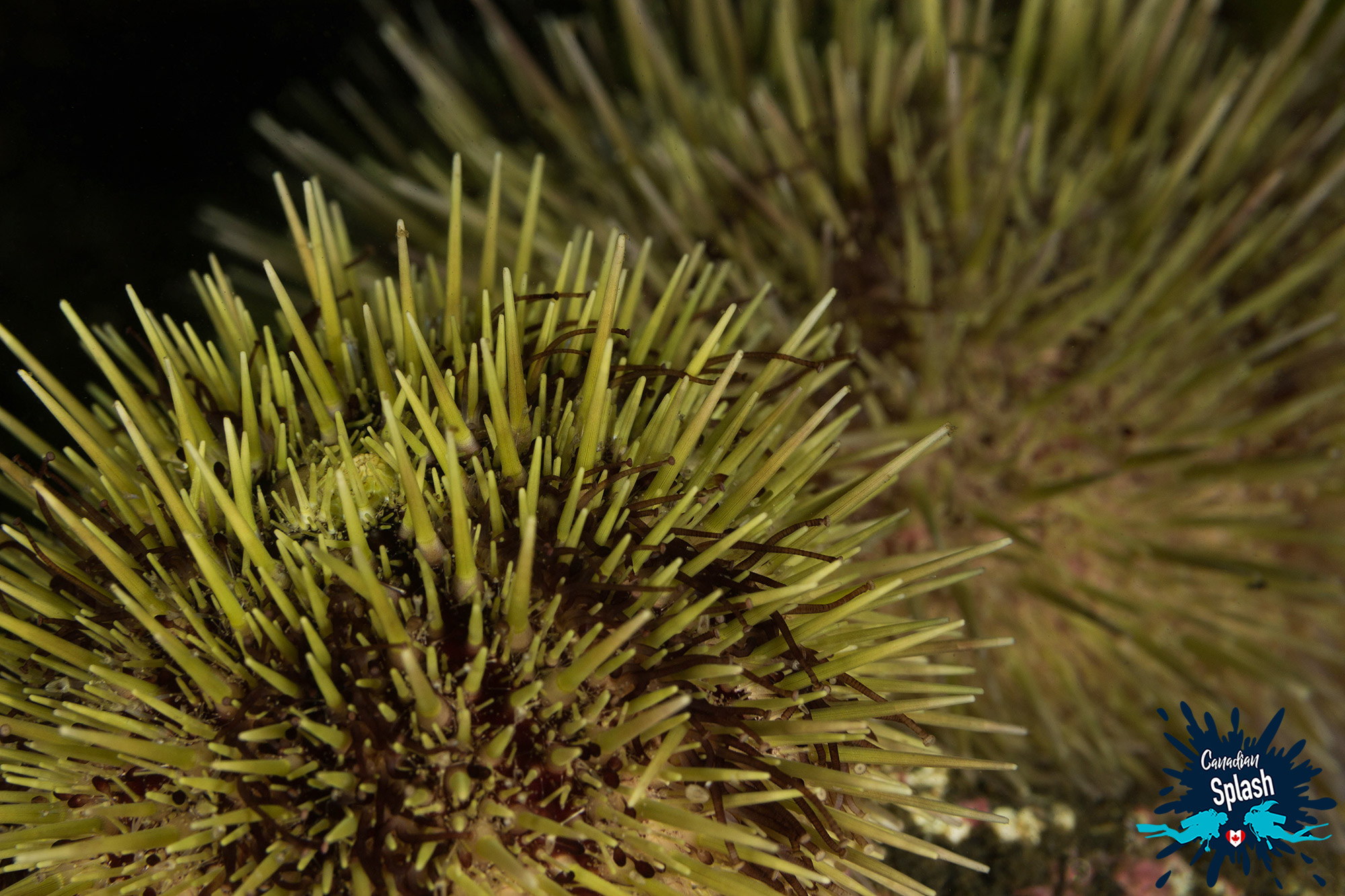
Chitons, or sea cradles, are an oval-shaped intertidal animal in the same phylum as limpets and snails. On the dorsal side, chitons have a hard shell composed of eight separate shell plates and on the ventral side a soft fleshy foot used for movement and adhesion. Their strong foot has the ability to cling tightly to solid material and hence chitons are often found on rocks and other hard surfaces.
Chitons in the north Atlantic consist of the mottled red chiton (Tonicella marmorea) and the northern red chiton (Tonicella rubra). These two species range from the Arctic to Massachusetts Bay and Greenland to Cape Cod respectively.
In the intertidal zone, chitons rely on their strong shell plates for protection against wave action and predation. When disstrubed chiton used their mucus-secreting foot to clamp down on a rock face. As the tide increases chitons become more active, moving around and scraping algae off rocks for food.
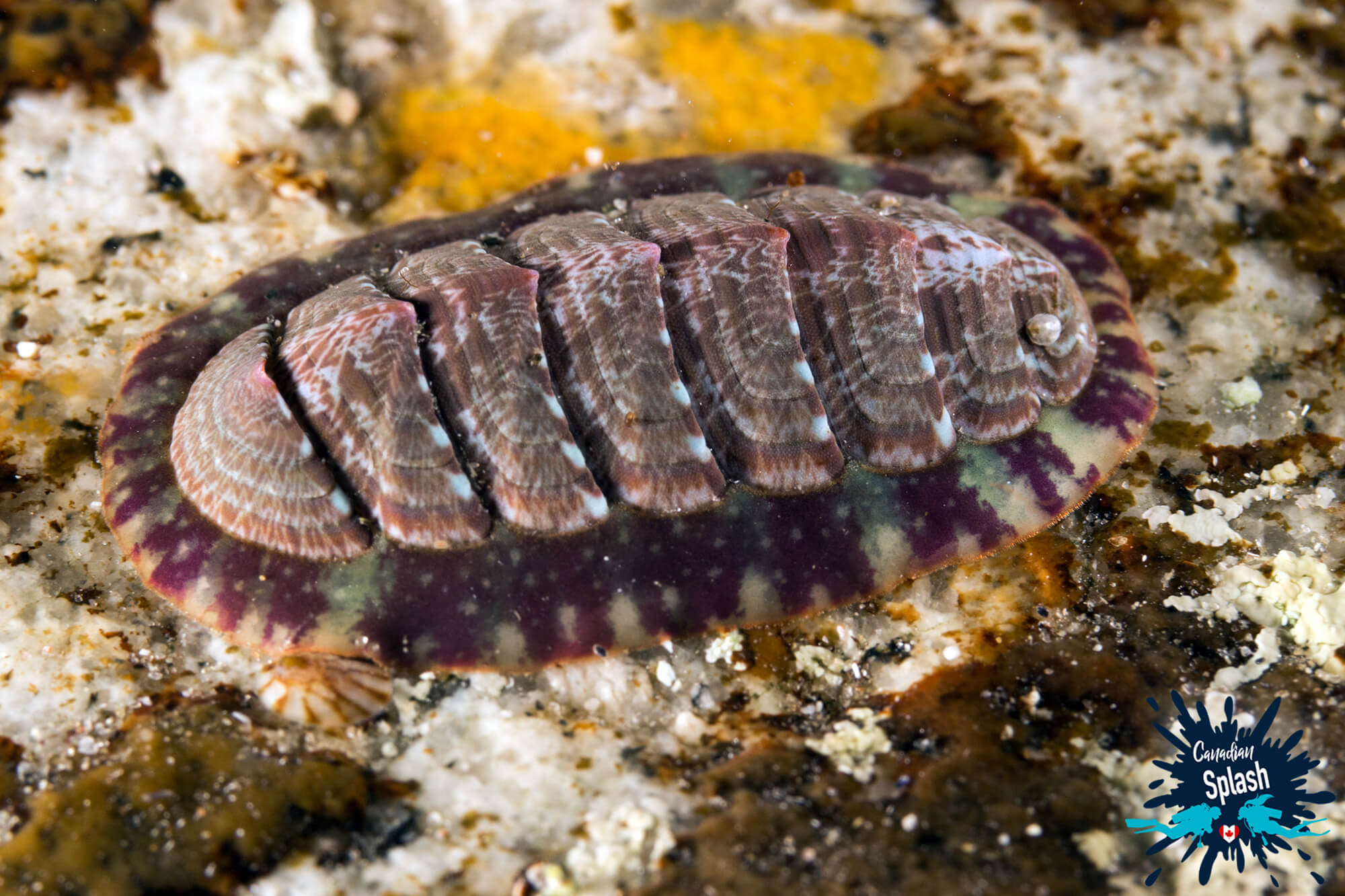
Snails are a mollusk classified as a gastropod which is a loose term signifying “digestive foot”. This name refers to their particular method of feeding where they use their foot to digest everything from shellfish to plant life. Snails live on land as well as in the water and can be found in aquatic environments that are both freshwater or saline. Depending on their habitat snails will either have lungs or gills accordingly.
The north Atlantic is home to a wide variety of marine snails. Some remain small throughout their entire lives, while others can grow to be much larger. Being a common tide pool and rocky shore inhabitant, snails have adapted to the intertidal zone by excreting mucus when the tide is low to avoid drying out. This mucus helps trap the water that is stored in their shell and allows them to stick to rocks without being whisked away.
Northern moon snails (Euspira heros), banded chink snails (Lacuna vincta), periwinkles (Littorina littorea; Littorina obtusata; Littorina saxatilis) and whelks (Thais lapillus; Buccinum undatum; Neptunea decemcostata; Colus stimpsoni; Busycon canaliculatum) are the most common oceanic snails found on the east coast of Canada. Moon snails, whelks and periwinkles are predatory gastropods consuming shelled prey through a combination of acidic secretions and hole drilling whereas banded chink snails are herbivores, preferring to graze on vegetation as opposed to other invertebrates.
While moon snails are more of a sandy benthic dweller, whelks, banded chinks and periwinkles are profuse in tide pools. They can be found all over the place attaching themselves to seaweed, rocks, shells and any other thing that crosses their path.
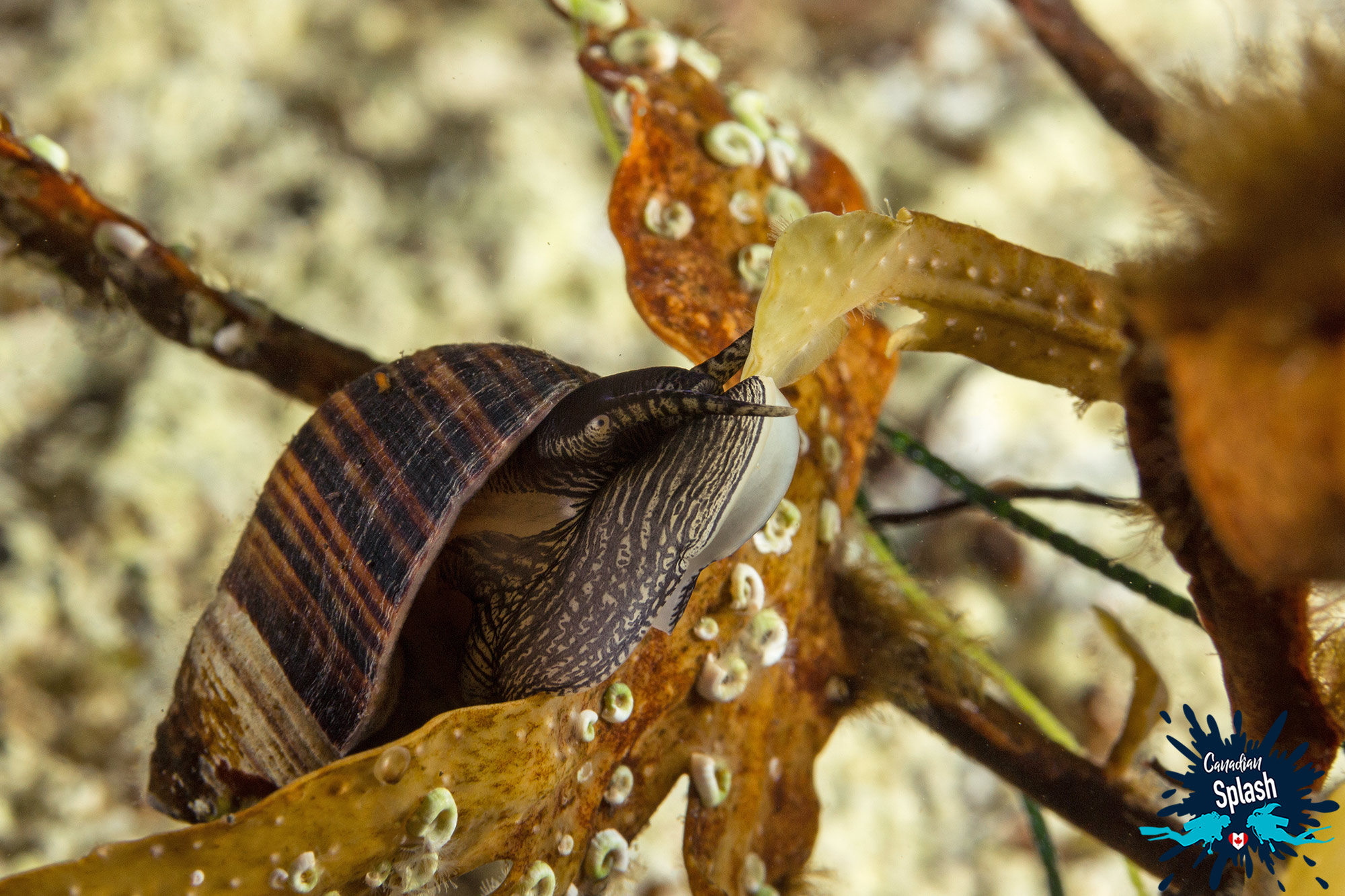
Crabs are a branch of the crustacean subphylum characterized by their short tail, exoskeleton and single pair of claws. They are bottom-feeding scavengers who have adapted to live in many different environments including marine, freshwater and land.
Thanks to a thick outer shell slowing water evaporation, crabs are a versatile species that can be found from the top of the rocky intertidal to the low watermark. Some pelagic crabs have even evolved to have modified paddle legs facilitating movement up and down the water column.
Several species of crabs live along the rocky shores of Atlantic Canada with the invasive green crab being the most common. Other species include; Atlantic rock crabs (Cancer irroratus), jonah crabs (Cancer borealis), common spider crabs (Libinia emarginata), northern stone crabs (Lithodes maia), toad crabs, Acadian hermit (Pagurus acadianus) and north Atlantic hairy hermit crabs (Pagurus pubescens).
Interesting Fact: Hermit crabs differ from true crabs in that they have a soft abdomen and must use abandoned shells for protection.
In a tide pool crabs can be found scampering along the benthos or hiding amongst the cracks and crevices of rocks. They also love to seek refuge beneath thick mats of seaweed for protection from the sun and desiccation.

Barnacles are an encrusting animal permanently attaching themselves to hard substrates such as rocks. They have a small white exterior carapace with a retractable top that can open and close for sessile filter feeding. Although in appearance barnacles differ significantly from their close relative’s crabs and lobsters, these animals are part of the crustacean subphylum.
Barnacles are shallow-water dwellers with 75% of species living in water less than 100 meters (300 feet) deep and 25% inhabiting the intertidal zone. The acorn barnacle (Semibalanus balanoides) is the most popular species of barnacles found throughout the North Atlantic intertidal zone. As one of the Atlantic intertidal most ubiquitous and tolerant creatures, acorn barnacles (and barnacles in general) are well adapted against water loss and wave action. Their calcite encasing is impermeable with two sliding plates that can contain moisture by sealing off their interior. This also protects against predation. To combat wave action, these barnacles are low growing and clump together as they anchor themselves across rock faces.
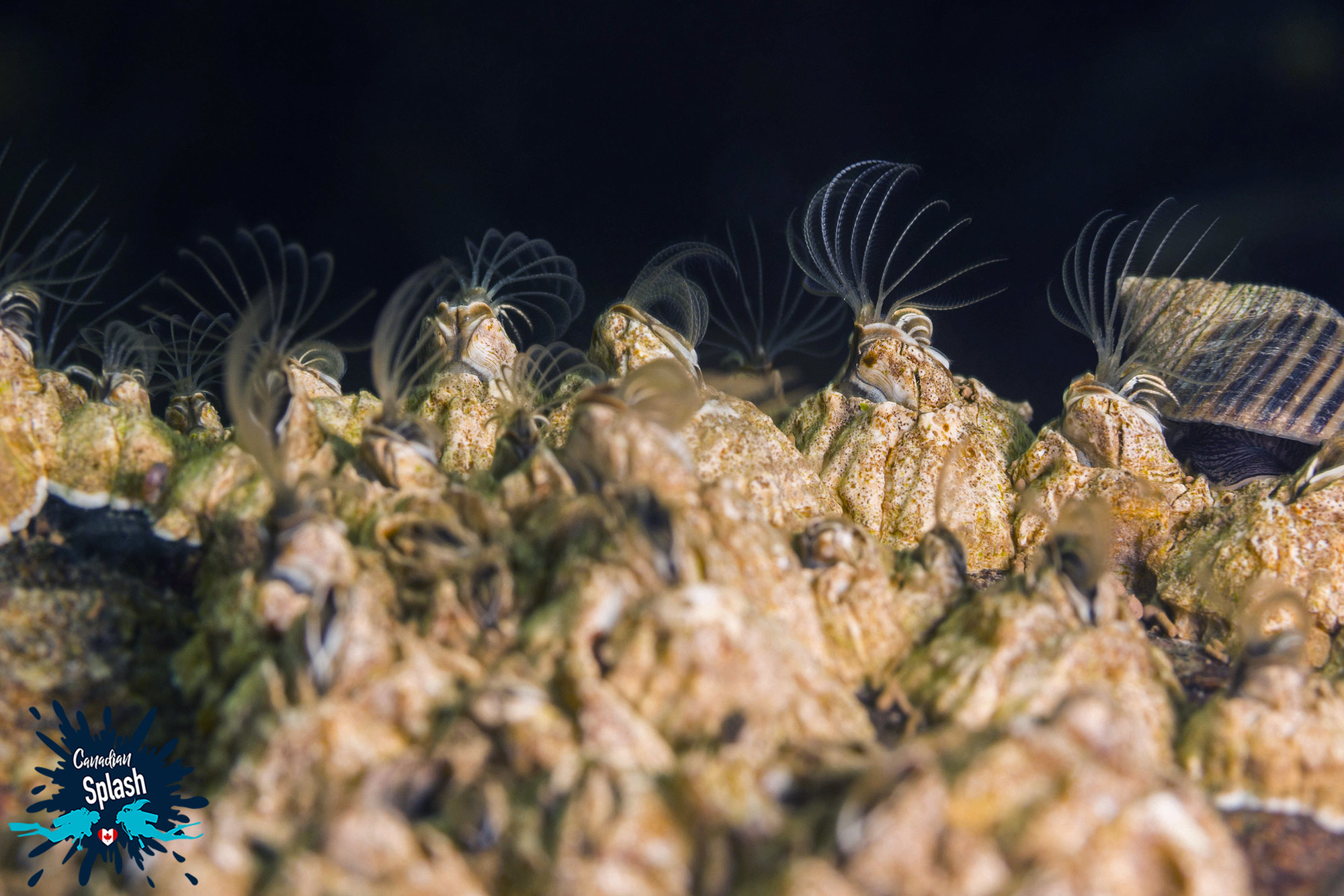
Mussels are a class of bivalves in the mollusk phylum. Like other bivalves such as clams and scallops, mussels are filter feeders, relying on plankton-laden water for nourishment. As such, they tend to occur in bays and estuaries with elevated levels of nutrients and increased phytoplankton. Mussels are widespread across the globe living in warm, cold, saltwater and freshwater environments. They are most prevalent in temperate zones.
Blue mussel (Mytilus edulis), Atlantic ribbed mussel (Geukensia demissa), northern horse mussel (Modiolus modiolus) and bay mussel (Mytilus trossulus) are a few species found in the north Atlantic. These ecosystem engineers favor the occurrence of many small invertebrates by increasing habitat complexity and improving local environmental conditions. In the rocky intertidal, mussels attach themselves to a solid foundation by using their byssus threads. Without a mechanism to hold on, mussels would be washed away, perhaps offshore or above the high tide. They also live in clustered groups to help reduce individual exposure to the impact of wave action and water loss during low tide.
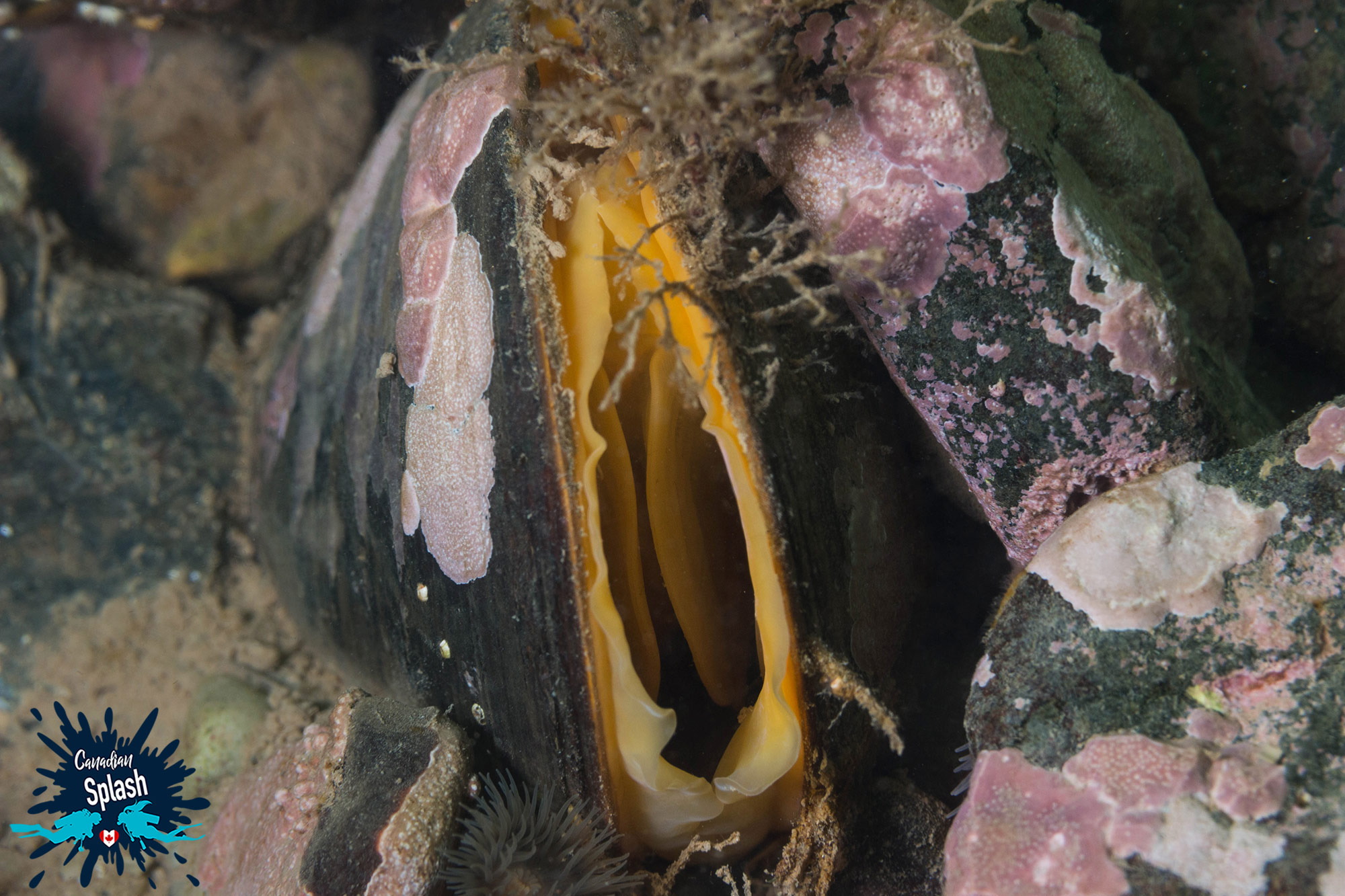
Sea anemones are a soft-bodied creature in the phylum cnidaria. They are cylindrical in shape with tentacles extending out the anterior end of the stalk. Their tentacles are equipped with cells that, in the same manner as jellyfish, sting both predators and prey. Anemones rely on these tentacles for protection and feeding, capturing passing zooplankton, detritus and small fish for nourishment.
Anemones are a widely dispersed species of animal and can be found in deep and shallow coastal waters around the world. In Atlantic Canada, plumose (Metridium senile), northern red (Urticina felina) and burrowing mud anemones (Cerianthus borealis; Pachycerianthus borealis) are a few species that are common in the rocky intertidal zones. The majority of these species cling to rocks, shells or submerged timber, with the exception of the burrowing mud anemones which tunnel in the mud or soft bottom.
Because of their soft bodies, anemones are prone to water loss and can only be out of the water for a short period of time. Hence they will often be found under seaweed and in the lower regions of tide pools where the ebbing ocean water only occasionally leaves them exposed.
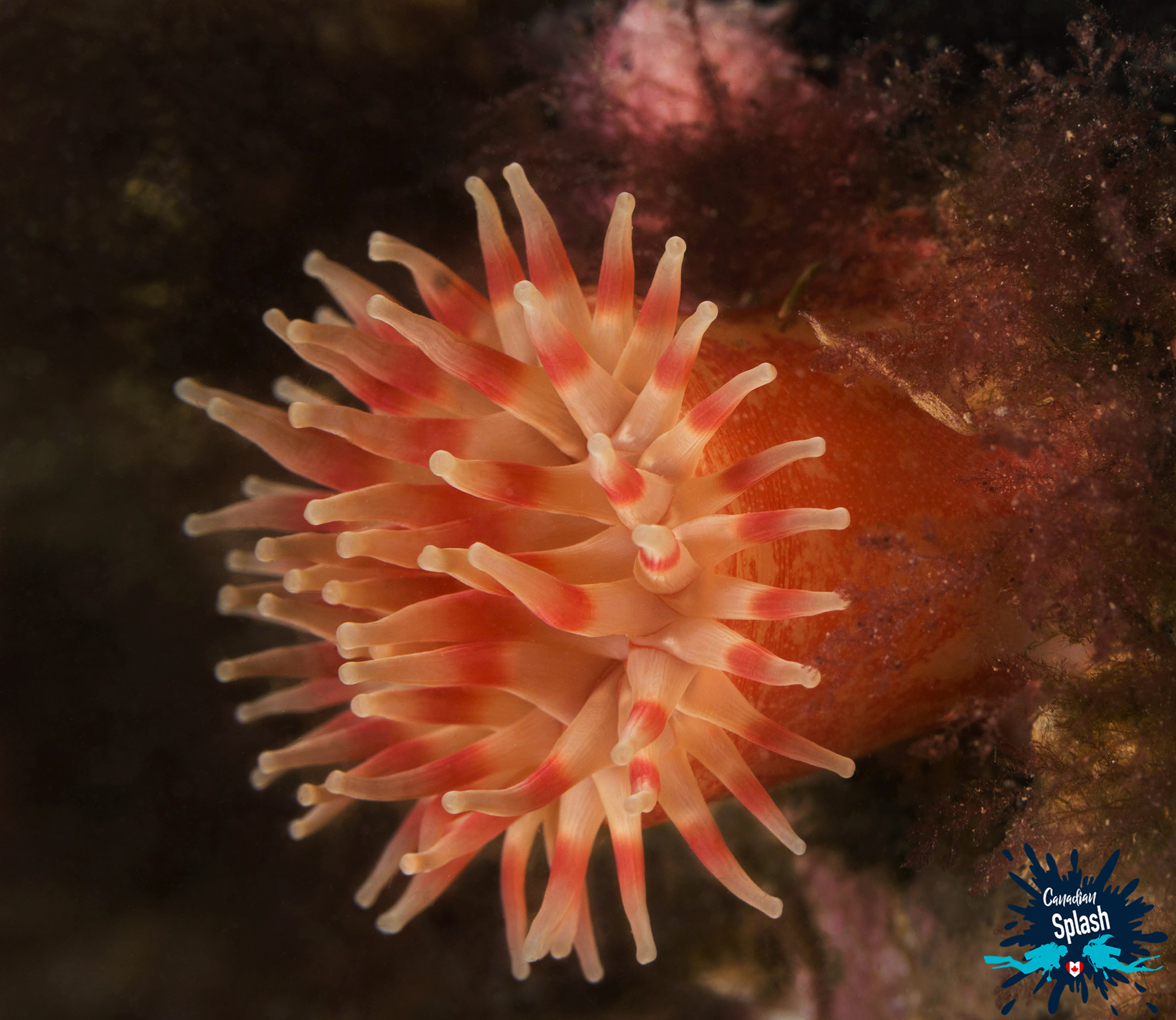
Tunicates, also called sea squirts, are aquatic animals with sac-like bodies protected by their thick skin resembling a “tunic”. They spend most of their lives either living solitarily or in large colonies where they form gelatinous mats that cover everything.
Tunicates have a polar to tropic distribution, of which the Canadian Maritimes is home to roughly 47 different species. Sea peaches (Halocynthia pyriformis), sea potatoes (Boltenia ovifera) and sea grapes (Molgula sp.) are a few of the indiginous tunicates whereas pancake batter tunicate (Didemnum vexillum), golden star tunicate (Botryllus schlosseri), violet tunicate (Botrylloides violaceus), clubbed tunicate (Styela clava), vase tunicate (Ciona intestinalis) and European sea squirt (Ascidiella aspersa) are invasive species. The vase tunicate is one of the most widely distributed species in Atlantic Canada proliferating in regions like Cape Breton, Halifax, Canso, Shelburn and the Fundy Shores.
Tunicates are very hardy intertidal critters and can tolerate a wide range of temperatures and salinities. They anchor themselves to rocks, eelgrass, algae, shellfish as well as man-made structures like docks, floats, pilings, moorings, ropes, chains, ship hulls and buoys.
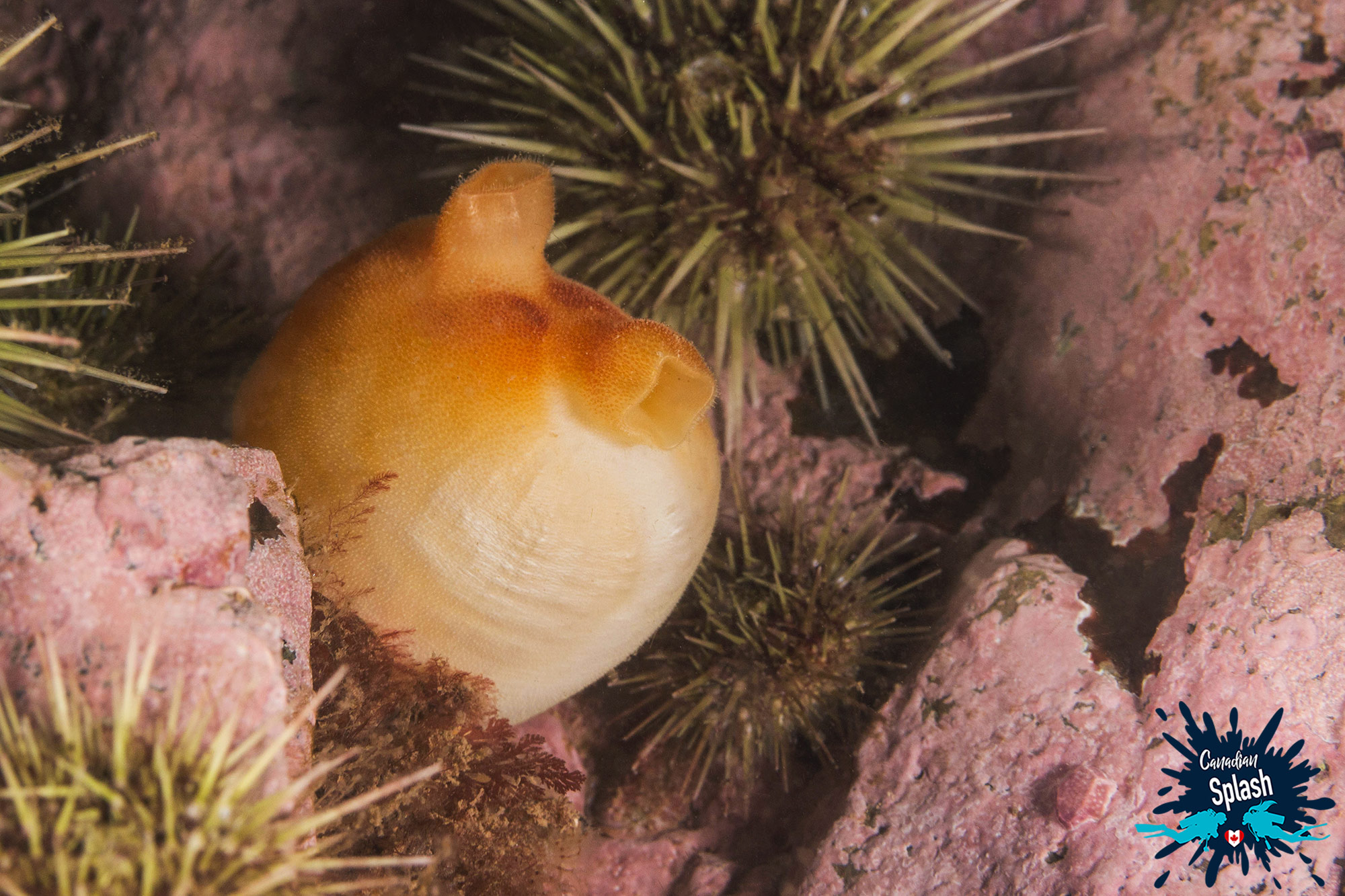
Have you ever scoured the shallows of a tide pool on the Canadian Atlantic coast? What did you find? Did we miss any of your favourite tide pool critters?
Writers Note: This post may contain affiliate links. We will make a small commission if you make a purchase through one of these links, at no extra cost to you. See full disclosure and disclaimer policy here.

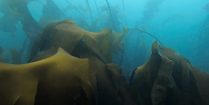
Located at the mouth of Fundy, there are many good reasons that the rocky coastlines of Grand Manan island would be ideal for scuba diving. Thanks to the ocean exposure and changing tides, the outer Bay of Fundy has some of the most dauntingly productive waters in Eastern North America.
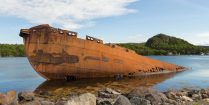
Year after year Newfoundland enjoys large marine animal migrations, rich fisheries and icebergs floating down from Greenland, so it should come as no surprise that this province would pair well with scuba diving.

With COVID grounding travel and keeping people stuck at home, some are tapping into their artsy rock painting side.

Sometimes all you need is a dash of colour and a splash of water! Spark your child’s creative spirit as they colour their way through the underwater world with the first official Dive Buddies 4 Life colouring book.
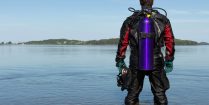
Given the current state of the world, travel is restricted and people are checking out their own backyards. Local scuba diving can be a very different experience than the usual holiday diving adventure, but it is one well worth exploring.
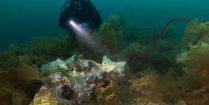
Newfoundland is a place chock-full of life, and scuba diving a whale boneyard is one of the many shore diving opportunities this Canadian province offers.
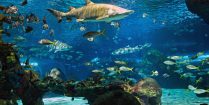
Do you want to try diving inside an aquarium? This unique Canadian location lets you experience scuba diving and up-close animal encounters like never before.

Saint Andrews by-the-sea may be small in size, but this summer town packs a pretty big dive punch for scuba divers willing to brave the Bay of Fundy's tides.
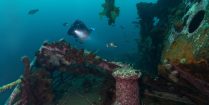
Do you enjoy cold water wreck diving? This dive destination will let you experience the best shipwrecks and scuba diving opportunities on the Canadian east coast.
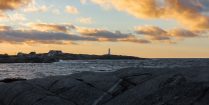
When diving in Nova Scotia where do you even begin? Do you start in Halifax the province's capital or do you wander beyond to see what the surrounding area has to offer?
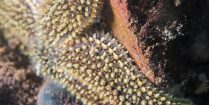
Sometimes finding a good dive spot is easier said than done. Shore diving around Saint John, New Brunswick is a testament to how unpredictable the Bay Fundy can be.
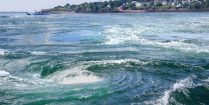
Submerging into the cold waters of Deer Island is one of the best ways to appreciate the vibrant array of color the Bay of Fundy hides beneath her surface.

Nova Scotia is full of cold water diving opportunities, particularly around shores of Halifax.
